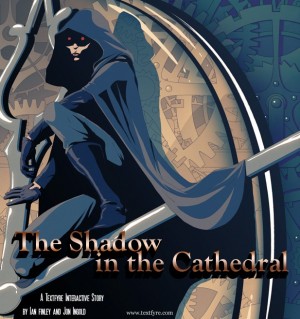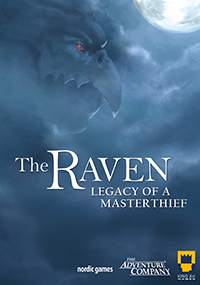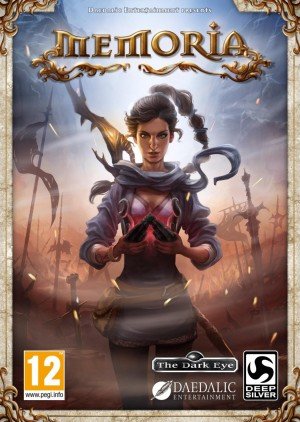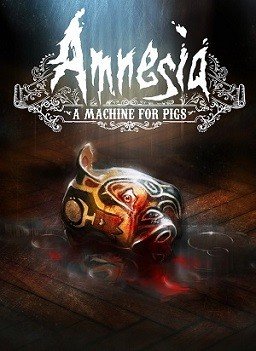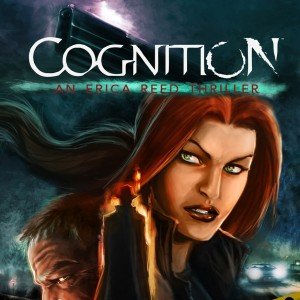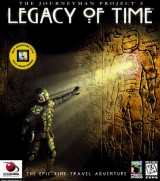Review for Lilly Looking Through

If I had to choose a single word to sum up the essence underlying Geeta Games’ Kickstarter-funded point-and-click adventure Lilly Looking Through, it would without a doubt be “childhood”. The game encapsulates all the best things about being young: a time of wonder and innocence, where mystery beckons around every corner and there’s no problem so big it can’t be overcome with a little courage and curiosity. Lead designers Steve and Jessica Hoogendyk have tapped into that sense of magic and imagination so many of us feel when we think back on our own childhood. As a result, Lilly Looking Through is a charming, if short, tale that’s more a journey of discovery than a by-the-numbers adventure.
The idea behind Lilly Looking Through is appropriately simple. While playing in the woods with his older sister Lilly, young Row gets tangled in a strange red swatch of fabric and is whisked away by a strong breeze. Armed only with a pair of magical goggles, Lilly must make her way past crumbling bridges, through pitch-black caverns, and across deep lakes to rescue him. When looking through the goggles, she is transported backwards in time, while her surroundings revert to their former state of a time long since past.
For example, when approaching a lake early in the game, Lilly finds her way to the waiting boat blocked by two large boulders; across the lake, the sunken ruins of a fort await, the tops of its walls silently rising out of the still waters. Traveling back in time to a past version of the lake, Lilly finds her path clear of boulders. Furthermore, with the water level being much lower in this time, the walls of the sunken fort now rise proudly above the waters, and its previously inaccessible interior now beckons.
Along the way, Lilly must discover how to operate various complicated pieces of machinery by pulling levers, jumping on pressure plates, and turning dials to reach each area’s exit. This gameplay mechanic strongly reminded me of Sierra’s 1996 adventure Lighthouse: The Dark Being, with its focus on figuring out devilish machinery in place of more traditional puzzles.
Lilly has a lot more going for it than its simple design philosophy might lead you to believe. In fact, I can’t remember the last time I was pulled into a world as quickly as I was during the first few minutes of gameplay. The opening scene tastefully showcases one of the game’s strongest assets: its graphics. Starting with an almost completely blacked-out screen, the introduction slowly reveals Lilly’s world by illuminating a small circle around her, then gradually displaying a bit more, drawing attention to other areas of the screen. By the time the entire scene had been unveiled, I’d already emotionally connected with Lilly, who is playfully hopping around on all fours, imitating the frog next to her.
The more I explored, the more it was impressed upon me how much effort Geeta Games had poured into creating attractive, hand-drawn environments which would feel at home in any quality children’s storybook. Even more impressive are the character animations of Lilly and Row; each frame is handcrafted, resulting in a motion picture-quality art style. Closer inspection shows that each movement is lovingly animated, and myriad little details breathe life into the characters. After getting up from a nasty spill, Lilly dusts herself off before going on. When a barrel proves too heavy for Row to move, he hunches down and dejectedly rests his head on his hand, elbow on knee, cocking it sideways to longingly gaze at the goggles hanging just out of reach. It’s great to see the designers paying this level of attention to visual cues, as they provide the characters with a depth typically only established through dialog.
While the characters do communicate here, actual conversations are purposely omitted. Lilly and Row instead verbalize by gasping, yelling, giggling, or otherwise transcending traditional spoken language. Only on a few occasions are actual words exchanged between the two. This gives the game a certain universal quality. Lilly and Row aren’t in a specific time or place; rather, it’s that familiar feeling (or at least fear) of having lost someone dear to you and blindly rushing into the unknown after them that makes the game relatable.
Lilly Looking Through establishes a palpable sense of solitude for its world. With Row gone, there’s nobody for Lilly to talk to or interact with. Signs of civilization are all around: a wooden bridge spanning a lake, a subterranean mechanism adorned with strange symbols and hieroglyphics, a silent forest hut lit from within, a broken-down wagon left abandoned. Yet the architects of all these things are nowhere to be found.
Set in this seemingly deserted plane of existence with nothing but decaying, ancient machinery to keep her company, Lilly Looking Through conveys a sense of incredible loneliness. As a result, the game is fairly light on storytelling, relying almost exclusively on the experience rather than exposition and a convoluted plot to move players forward.
The game’s understated soundtrack – ranging from eerie forest melodies to haunting faraway rhythms carried on the wind as if from a great distance – deepens the feeling of being stranded in a world that’s nothing more than an abandoned relic. This sense of isolation is surely far from incidental, as Steve Hoogendyk has previously worked on several games in the Myst series.
The designers’ adherence to simplicity is evident in other aspects of the game, too. There is no inventory management; all puzzles are solved organically by operating machine switches and levers. On the rare occasion that an environmental item is required to progress, simply clicking the item to pick it up and then clicking on the area where it needs to be used suffices.
Really the game's only significant shortcoming is that it features only ten locations to travel through. With each location equating to one central puzzle, that’s precious little to keep tinkerers occupied for long. Progressing to a new location requires the previous one to be solved, so the path is invariably linear (with the exception of three linked areas near the end of the game which feature puzzles that extend from one to the next).
In all, it only took me between 2-3 hours to see everything the game had to offer. While I would have loved to see more in the way of content, the story does wrap up nicely in the end. The significance of the red fabric is explained, and all loose ends are tied up neatly. The story ultimately comes satisfyingly full circle, and left me looking forward to, perhaps, a second instalment of Lilly and Row’s adventures.
On the negative end of the spectrum, the game does lack any real difficulty. Puzzles can typically be solved using simple trial-and-error. A built-in hint button displays all hotspots when clicked, and some areas have very few points of interaction to experiment with, such as a gnarled tree having taken root on a collapsed bridge. As a result, there's no real challenge that adventure veterans may be looking for.
There’s a lot to love about Lilly Looking Through. The game is overflowing with charm, much of which stems from the brilliant art style and soothing musical score. More importantly, it has a universal appeal, as we can all identify with the innocent childhood belief in a magical adventure, particularly one spent in pursuit of someone we cherish. Though the game is very much on the short side and won’t take up more than an afternoon of your time, everything in it from the graphics to music to the emotionally gratifying connection you'll forge with its protagonists is of terrific quality. Don't overlook this one.









